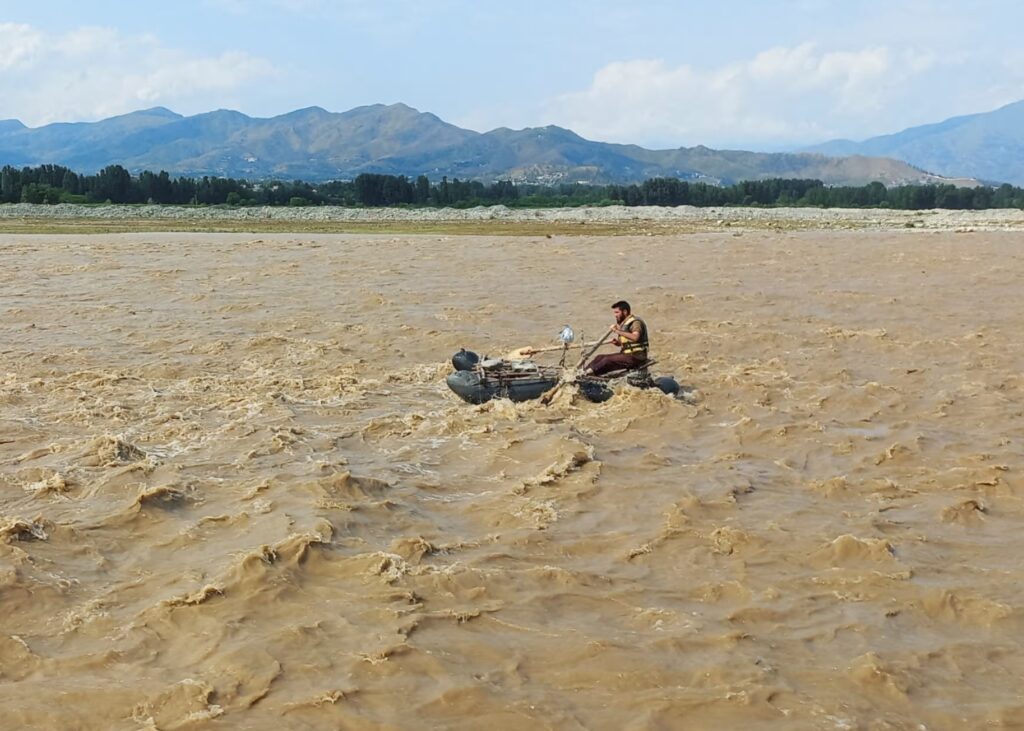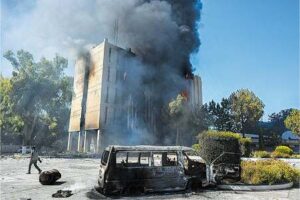PESHAWAR – When nature strikes, grief is natural—but silence is not. The recent flash floods in Khyber Pakhtunkhwa that claimed 32 lives raise urgent questions about governance, preparedness, and accountability in KP’s disaster management system.
While climate change has intensified extreme weather patterns—from flash floods in the mountains to urban windstorms and hail—our public awareness remains dangerously low. Knowing how to respond during emergencies is no longer just a civic concern; it is a matter of life and death.
In cities, wind gusts are now powerful enough to uproot trees, shatter billboards, knock down weak solar structures, and even rip off multi-million-rupee stadium roofs. The danger is now both rural and urban—yet preparation is unequal. Residents of urban areas often lack experience with mountain hazards, just as villagers may not understand urban infrastructure risks.
Also Read: Monsoon Floods in Swat Trigger Devastation and Prompt High Alert
The tragedy in Swat is a grim reminder that our systems are not ready. Rescue 1122 lacks functioning equipment: boats are in disrepair, fuel is scarce, and generators don’t work. Helicopter rescue remains an unreliable fantasy. In fact, the use of helicopters in KP’s disaster response has always been more symbolic than functional.
The Swat incident is not a natural disaster alone—it is also the result of years of institutional failure. Hours passed in daylight before 18 people were swept away by raging waters. Couldn’t an attempt to rescue them have been made?
To be fair, not every Rescue 1122 recruitment is through nepotism or incompetence. Heroes like the officer who risked his life to save a child from the Panjkora River remind us of the service’s potential. But individual heroism cannot compensate for systemic neglect.
Flood has hit Swat!
— Discover Pakistan 🇵🇰 | پاکستان (@PakistanNature) April 18, 2023
Mankial, Madyan areas,Qandeel, Utror worst affected areas.
As long as we continue to build infrastructure in the river bed, such damage would become the new normal #Pakistan #Floods pic.twitter.com/1l0Ni9k5Ck
This was not the first time buildings were allowed near the riverbanks in Swat. Every year, massive hotels and restaurants rise illegally, often in direct violation of safety norms. Prior floods have brought destruction to these same sites, yet the powerful continue to build—and the authorities continue to look away.
Why? Political influence. A former chief minister hailed from Swat, and still, little changed. Fingers are pointed at a few influential individuals whose past actions are repeatedly blamed. But no formal investigations follow. No real reforms emerge. It is always easier to move on than to clean house.
“Har shaakh pe ullu baitha hai…” The saying fits too well. Every department’s failure compounds the other. And every year, more lives are lost.
The National Disaster Management Authority (NDMA), provincial departments, even federal ministries remained inactive when flash floods raged. Not one meaningful attempt to save the drowning was recorded. Where were the helicopters then? Where were the plans?
27.06.2025#Pakistan
— Climate Review (@ClimateRe50366) June 27, 2025
Floods caused by pre-monsoon #rains have killed dozens of tourists in northwest Pakistan. 7 bodies have been found after 16 people went missing.Flow at Khwazakel on the #Swat River has increased to 77,782 ft³/s, which is classified as a very severe flood. pic.twitter.com/eE3UMn0EIS
Should we not hold someone accountable when 18 lives vanish before our eyes?
And it’s not just Swat. In Gilgit, a tourist accident only came to public attention days later—another example of how poorly informed and protected visitors are in high-risk regions. All entry points to tourist zones must provide warnings, weather alerts, and safety information. But we don’t prioritize prevention—we react, criticize, and then forget.
We beat the drum of post-disaster blame. Rarely do we build systems to prevent future tragedies.
The problem is deeper than failed rescue attempts or broken boats. It’s about the culture of inaction—where the powerful are protected, where the land mafia thrives, and where government officers are reduced to helpless bystanders. No wonder toxic riverbank construction continues, contributing to pollution and risking lives.
The question remains: when every institution fails, and every authority stays silent—who should we hold responsible for the blood on the ground?












